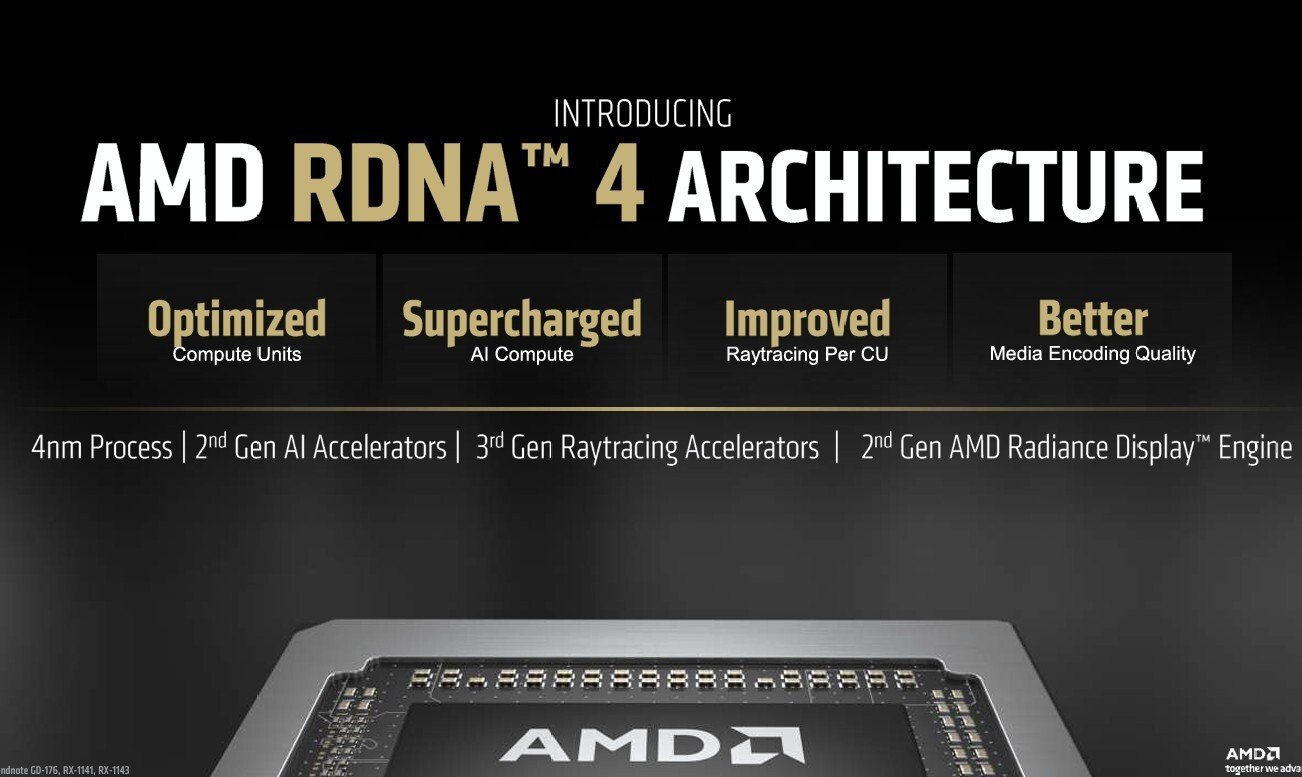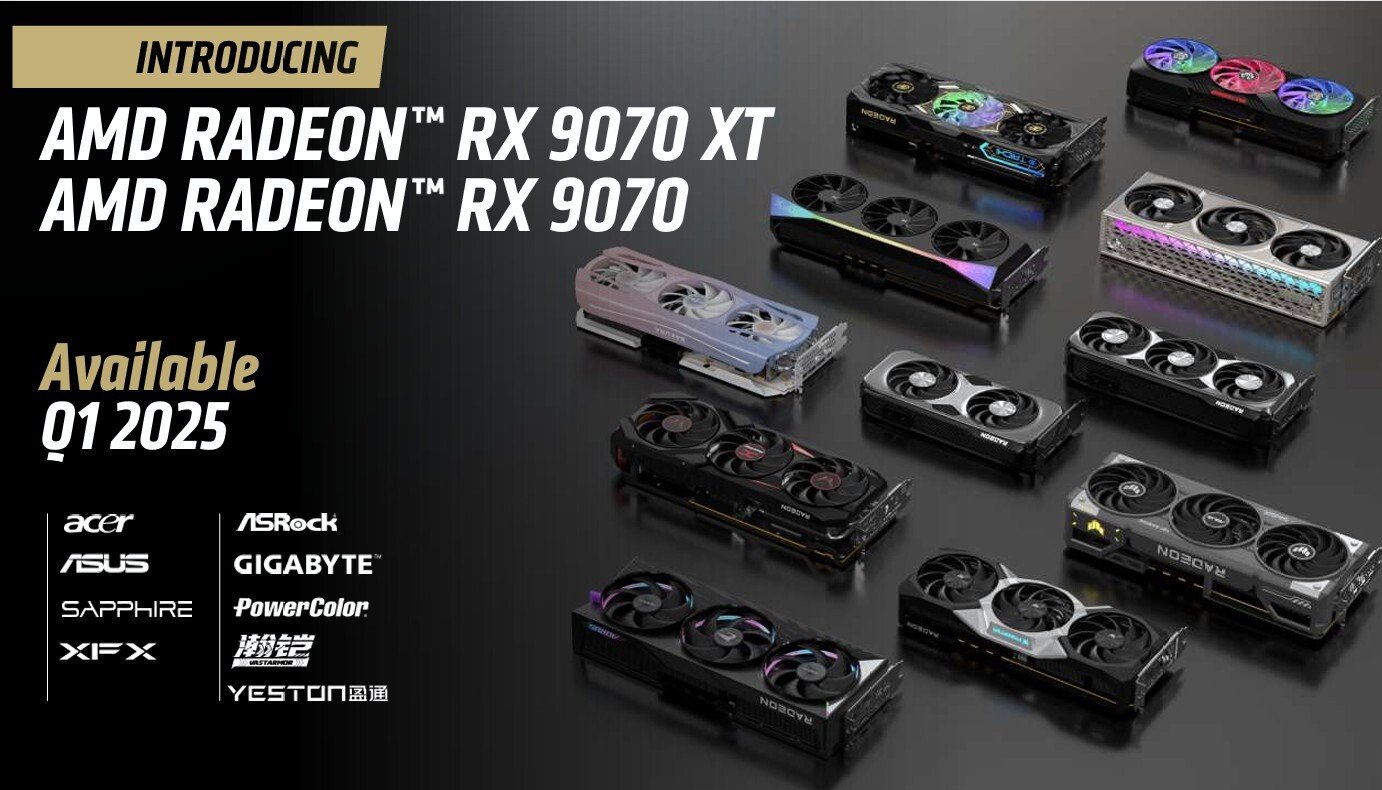AMD has officially announced its next-generation gaming graphics cards—the Radeon RX 9070 XT and Radeon RX 9070—during the 2025 International CES. These new products are set to lead AMD’s performance-segment offerings and are powered by the company’s latest RDNA 4 graphics architecture. AMD plans to launch both cards within the first quarter of 2025, signaling an aggressive approach to the highly competitive GPU market.
Shift in Strategy
In a notable departure from previous strategies, AMD has revised its nomenclature for gaming GPUs, reflecting a tactical retreat from the enthusiast graphics segment. The company’s focus now rests on delivering competitive performance within the broader performance market. According to AMD’s positioning, the Radeon RX 9070 XT will deliver performance comparable to the previous-generation Radeon RX 7900 XT in traditional rasterization tasks, while the RX 9070 will slightly outperform the RX 7800 XT. Meanwhile, the Radeon RX 9060 XT and RX 9060 will aim to outclass the RX 7700 XT and RX 7600 XT, respectively.

This strategy aligns the RX 9070 series against NVIDIA’s existing GeForce RTX 4000 lineup and the anticipated GeForce RTX 5000 series, signaling AMD’s commitment to maintaining relevance in a highly dynamic market.
RDNA 4: What’s New

The RDNA 4 architecture underpins the new Radeon RX 9070 series and promises significant advancements in several key areas:
- Enhanced SIMD Performance: AMD claims a substantial generational improvement in the performance of the SIMD (Single Instruction, Multiple Data) units within the RDNA 4 compute units.
- 2nd Gen AI Accelerators: The new AI accelerators are expected to deliver notable performance gains, enabling advanced features such as image generation, document summarization, and linguistic tasks through an application called AMD Adrenalin AI. This tool will also serve as an interactive assistant for AMD-related queries, functioning as a counterpart to NVIDIA’s Chat RTX.
- 3rd Gen Ray Accelerators: AMD’s updated ray-tracing hardware aims to reduce the computational overhead of ray tracing by shifting more workload to dedicated ray-tracing cores, freeing up the SIMD units for other tasks.
- Media and Display Enhancements: The new GPUs are set to introduce improved media encoding and decoding capabilities, as well as expanded support for advanced display interfaces.
FidelityFX Super Resolution 4

AMD also unveiled FidelityFX Super Resolution 4 (FSR 4), designed specifically for RDNA 4 GPUs. This iteration introduces machine-learning-based upscaling to deliver higher-quality visuals while maintaining performance. FSR 4 will include Frame Generation technology and an updated Anti-Lag 2 feature for smoother gaming experiences. One of the first games to support FSR 4 will be Call of Duty: Black Ops 6, highlighting AMD’s close partnerships with game developers.
Partner Support and AIB Lineup

AMD’s board partners are ready to launch custom Radeon RX 9070 series models, ensuring a variety of designs and cooling solutions for gamers. Partners include Acer, ASRock, ASUS, GIGABYTE, Sapphire, PowerColor, XFX, Vastarmor, and Yeston. However, MSI, a long-time AMD partner, appears to have exited the AMD graphics card ecosystem, leaving a noticeable gap in the lineup.
First Look at the “Navi 48” GPU
The Radeon RX 9070 series will be powered by the “Navi 48” GPU, which has been revealed to feature a unique rectangular die with a 2:1 aspect ratio. This design supports the theory that “Navi 48” consists of two “Navi 44” dies fused together with full cache coherency. The “Navi 48” GPU is expected to feature a 256-bit GDDR6 memory interface and 64 compute units (4,096 stream processors). In contrast, the smaller “Navi 44” GPU will offer half these specifications, with a 128-bit GDDR6 interface and 32 compute units.

Both GPUs will be manufactured using TSMC’s N4P (4 nm EUV) process node, which AMD is utilizing across its current product lineup, including mobile processors and CPU chipsets.
Closing Thoughts
AMD’s Radeon RX 9070 XT and RX 9070 represent a calculated move to solidify the company’s position in the performance GPU segment. With RDNA 4 architecture bringing significant advancements in ray tracing, AI acceleration, and media capabilities, AMD is positioning itself as a strong contender against NVIDIA’s upcoming offerings. As the first quarter of 2025 approaches, the stage is set for an exciting battle in the GPU market.







